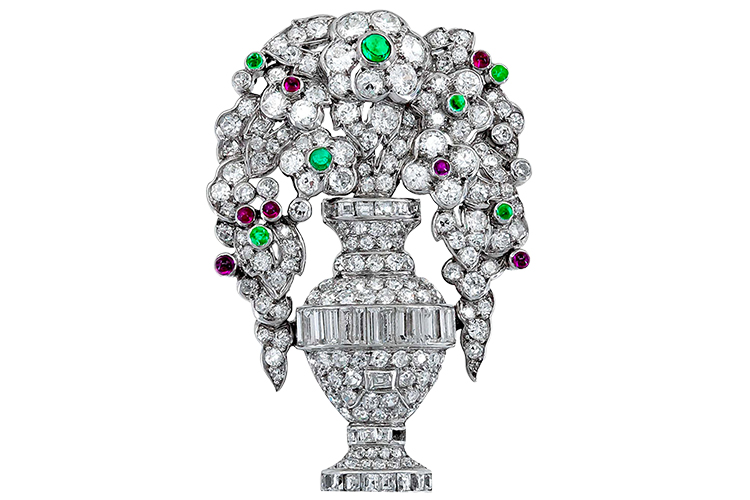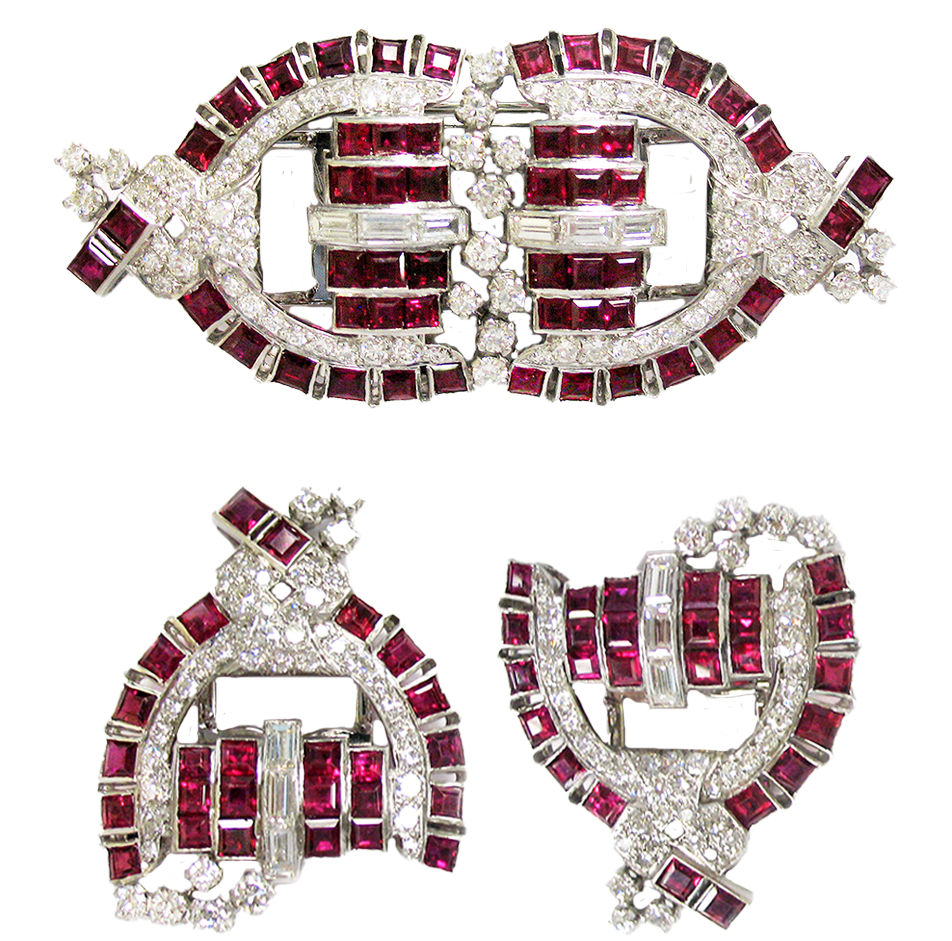Brooches: From Functional to Fashionable

Brooches: From Functional to Fashionable
One of the best ways for jewelry designers to showcase their art is through a brooch. Untethered by having to fit a finger, or wrist, or wrap around a neck, brooches provide a canvas to create whatever a designer can imagine. While brooches are ornamental today, they didn’t start out that way.
Prior to the invention of buttons, zippers, snaps and other closures that hold our clothes in place, brooches had the very utilitarian purpose of preventing wardrobe malfunctions. The Vikings used them to hold capes, the Celts used them to hold cloaks, and the Greeks and Romans used them to hold their togas together.

Bronze treasure from Zagorze, Early Iron Age, around 600 BC, Lusatian Culture, fibula. Courtesy, Silar.
These earliest brooches, called “fibula”, were generally made of thorns, sticks or flint and their origins can be traced back to the Bronze Age (approximately 3300 BCE to 1200 BCE). The first fibula’s were straight and were stuck through fabric, but later fibula were similar in form to a modern safety pin. As the years passed iron became more readily available ushering in the Iron Age (approximately 1200 BCE to 1000 BCE). During the Iron Age fibula morphed from being strictly functional to having some sort of design and decoration. By the Middle Ages, fibula were replaced by the advent of other types of closures for garments.
Brooches in the Renaissance
The brooch as we know it today, a personal decorative accessory, really took off during the Renaissance in Europe. Precious metals and gems were used to make these brooches. Sometimes the gems used in a piece were talismanic and were thought to offer the wearer protection. Emerald, diamond, ruby, amethyst and topaz were the most popular gemstone choices. Religious themes became popular as did brooches with hand-painted portraits, which were a way of keeping loved ones close.
During the 1500s and 1600s brooches were very intricate and heavily decorated evolving into an important show of wealth and power, as well as a fashion statement, that were worn just as readily by both men and women. Beautiful and decorative brooches were also worn to convey rank and personal interests as well as political or social leanings.

Antique plique a jour enamel, limoge and gold portrait brooch depicting a young woman, French, circa 1890s, courtesy Hartley Brown, (@hartley.brown).
En Tremblant Brooches
In the 17th and 18th centuries aigrette brooches were very popular. These brooches were flat and shaped like a feather. They were often set with garnets or diamonds, in silver or silver topped gold and were quite detailed, sometimes depicting birds fluttering around the feather. Aigrettes made a comeback in the 1800s and early 1900s when the brooches actually held a real feather and were often worn in the hair or on a headband.
One of the most enchanting brooch styles, is en tremblant, which means to tremble in French and describes jewelry that was created to “tremble”. During the 1700s and 1800s jewelry was made en tremblant by attaching the jewelry component that was meant to tremble to a small coiled spring, known as a trembler, which caused it to sway as the person wearing the jewel moved. This technique was used primarily on brooches with a floral motif, butterfly or dragonfly wings. The movement made the brooch appear larger and more sparkly adding importance to the jewel. En tremblant brooches were particularly lovely in candlelight when the movement made the diamonds especially bright.

Old cut diamond, ruby and silver topped gold en tremblant brooch, courtesy Paul Fisher (@paulfisherjewelry).
Dress Clips
Brooches remained a jewelry box staple in the early 20thcentury, when dress clips came into vogue. Dress clips were two brooches that fit together to become one larger piece allowing them to be worn in multiple ways. During the Art Deco era, the clips were taken apart and worn on each strap of a gown or on each side of the neckline. When the clips were put together they became a statement making brooch worn as one piece. Brooches continued to be an important part of a jewelry wardrobe until they began to fall out of favor in the late 1960s and struggled to regain a place in jewelry fashion, until now.
Today, the beauty of the brooch is being rediscovered by a new generation of jewelry enthusiasts, fashionistas and Hollywood celebs who wear them to create their own unique style.

Diamond, ruby and platinum dress clip brooch, circa 1930s, courtesy J.&S.S. DeYoung, (@laurendeyoungjewelry).
Source: International Antique Jewelers Association. Featured image (top of page): Emerald, ruby, diamond and platinum flower vase motif brooch, French, signed LaCloche Paris, courtesy Spectra Fine Jewelry, (@SpectraFineJewelry).